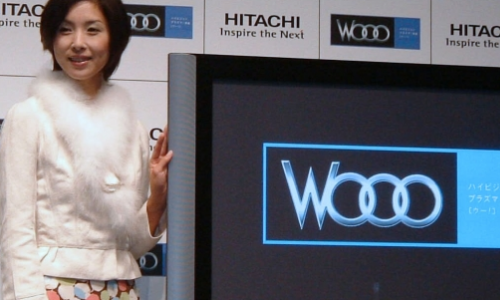This fall, Japanese consumer electronics and home appliance manufacturer Hitachi will stop selling Hitachi-branded TVs, but will sell Sony products through its dealerships. Despite the defeat in the process of market shrinking, Hitachi still hopes to retain a vital sales network.

Hitachi Wooo Brand TV
Hitachi announced on Tuesday that its dealerships will begin selling Sony Bravia brand TVs under a new partnership in October. As Hitachi transitions to Internet-connected products and services, Hitachi has decided to retain consumer electronics retail channels, which helps collect customer data.
In the Japanese TV market, which has an overall scale of approximately 4.2 million units, Hitachi has lost its presence. Last year, Hitachi sold only 60,000 to 70,000 Wooo-branded TVs in Japan, accounting for only about 1% of the Japanese market.
In fiscal 2010, due to a full shift to digital terrestrial broadcasting in 2011, demand for TVs surged. Hitachi’s sales in the Japanese market that year reached 1.4 million units. But even at that time, Hitachi's market share was only about 4%.
As early as 1956, Hitachi sold the first 14-inch TV. Later, Hitachi launched a CRT color TV and hired legendary baseball player Wang Zhenzhi to star in an advertisement. In the 1990s, the market began to slow down. In 1999, Hitachi and Fujitsu established a large-scale plasma display panel joint venture.
However, newer, cost-competitive rivals such as South Korea's Samsung Electronics are gradually gaining popularity in markets such as the United States. Although there has been a short-term upward trend in the Japanese market, the profitability of Hitachi's TV business has gradually declined. Hitachi stopped TV production in 2012 and has since outsourced TV manufacturing. In the past 20 years, Hitachi TV shipments have been cut in half.
Hitachi has about 4,000 affiliated dealerships in Japan, and selling Sony TV can minimize the pain of its dealerships. Hitachi has no capital relationship with these stores.
Hitachi has a 30% market share in the Japanese refrigerator and washing machine market, and a 10% share in the LED lighting market. As Hitachi is trying to cultivate its Lumada IoT platform as a major source of income, the white goods business that can provide a variety of consumer data has strategic value.
In the rapidly aging rural areas, dealerships also play a vital role, for example, they can pick up orders and provide potential new business opportunities.
Amazon has launched a microwave oven equipped with smart speakers to help the company collect consumer data. Unlike TVs and other audio-visual equipment, the Japanese domestic consumer electronics market has remained stable at around 2 trillion yen (approximately US$17.7 billion). In such a business environment, Hitachi made a painful decision to rely on Sony to retain its sales network.
Automotive Connectors,Automobile Pin Holder Connector,Industrial Automobile Connector,Waterproof Automotive Connector
Dongguan Yangyue Metal Technology Co., Ltd , https://www.yyconnector.com